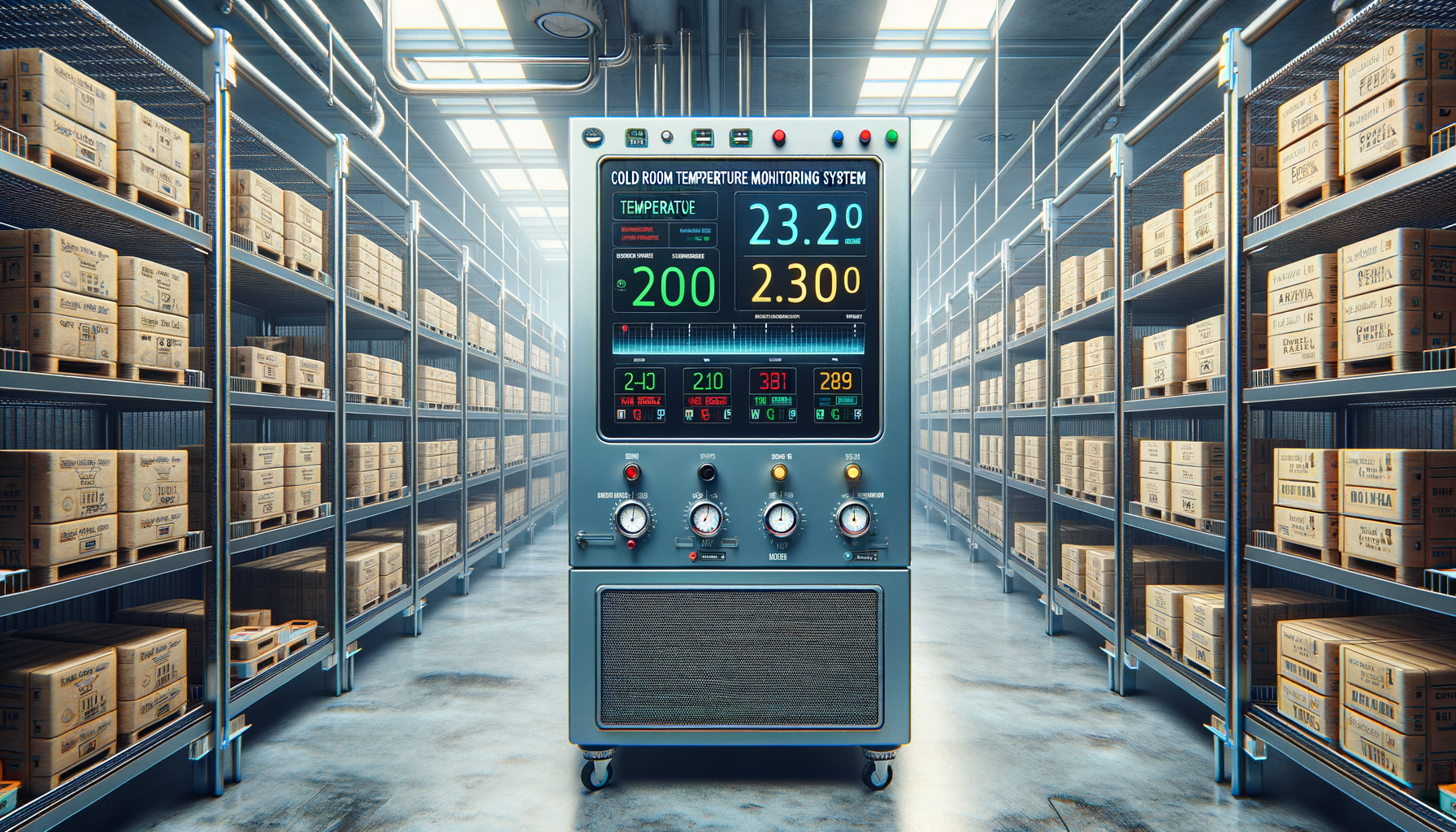Cold Room Temperature Monitoring System: Essential for Quality Control and Compliance
In industries such as food storage, pharmaceuticals, and healthcare, maintaining the right temperature in cold rooms is crucial for preserving the integrity of products. A Cold Room Temperature Monitoring System (CRTMS) ensures that temperatures within these controlled environments are consistently monitored and maintained within safe ranges.

Understanding Cold Room Temperature Monitoring Systems
Cold Room Temperature Monitoring Systems (CRTMS) are essential tools used in various industries to maintain the integrity of temperature-sensitive products. These systems are designed to continuously monitor and record the temperature within cold storage areas, ensuring that it remains within predetermined safe ranges. The importance of CRTMS cannot be overstated, particularly in sectors such as food storage, pharmaceuticals, and healthcare, where temperature deviations can lead to significant product loss and safety issues.
CRTMS typically consist of sensors placed strategically within the cold room to detect temperature changes. These sensors are connected to a central system that records data in real-time. This setup allows for immediate alerts if temperatures deviate from the set parameters, enabling quick corrective actions. The ability to monitor temperature remotely is a crucial feature, especially for businesses operating multiple facilities or those located in remote areas.
By employing CRTMS, companies can ensure compliance with industry regulations and standards, which often mandate strict temperature control. This compliance is not only a legal requirement but also a critical factor in maintaining customer trust and satisfaction. Furthermore, CRTMS can help in reducing energy costs by optimizing the performance of cooling systems, thus contributing to more sustainable business practices.
Key Features and Benefits of CRTMS
Cold Room Temperature Monitoring Systems come equipped with a variety of features that enhance their functionality and reliability. One of the primary features is real-time data logging, which ensures that temperature fluctuations are recorded as they happen. This data can be accessed remotely via cloud-based platforms, allowing for convenient monitoring from anywhere in the world.
Another significant feature is the ability to set customizable alerts. Users can define temperature thresholds, and the system will send notifications via email, SMS, or app alerts if these thresholds are breached. This immediate notification system is vital for preventing potential spoilage or damage to sensitive products.
The benefits of implementing a CRTMS extend beyond mere compliance and product safety. These systems also offer:
- Cost Savings: By optimizing cooling systems and reducing energy consumption.
- Improved Efficiency: Automated monitoring reduces the need for manual checks, freeing up staff for other tasks.
- Data Analysis: Historical data can be analyzed to identify trends and improve temperature management strategies.
Overall, CRTMS provide a comprehensive solution for maintaining the quality and safety of temperature-sensitive products, making them an invaluable asset for industries reliant on cold storage.
Applications Across Industries
The versatility of Cold Room Temperature Monitoring Systems makes them applicable across a wide range of industries. In the food industry, for example, CRTMS are crucial for ensuring that perishable goods such as meat, dairy, and produce are stored at optimal temperatures to prevent spoilage and maintain quality. This is not only important for consumer safety but also for minimizing waste and maximizing profit margins.
In the pharmaceutical industry, CRTMS play a critical role in the storage of medications and vaccines. Many pharmaceutical products require specific temperature conditions to remain effective, and any deviation can result in compromised efficacy. By using CRTMS, pharmaceutical companies can ensure that their products are stored correctly, safeguarding public health and meeting regulatory requirements.
The healthcare sector also benefits significantly from CRTMS, particularly in hospitals and laboratories where biological samples and sensitive medical supplies are stored. Maintaining the correct temperature in these environments is essential for accurate testing and effective treatment outcomes.
Beyond these primary industries, CRTMS are also used in logistics and transportation, where maintaining a consistent temperature during transit is crucial. Overall, the widespread application of CRTMS underscores their importance in maintaining product integrity, safety, and compliance across various sectors.
Technological Advancements in CRTMS
As technology continues to advance, so too do the capabilities of Cold Room Temperature Monitoring Systems. Modern CRTMS are increasingly incorporating Internet of Things (IoT) technology, which enhances their connectivity and functionality. IoT-enabled CRTMS can integrate with other smart systems within a facility, providing a holistic approach to monitoring and management.
Artificial Intelligence (AI) and machine learning are also being leveraged to improve the predictive capabilities of CRTMS. These technologies can analyze historical data to predict potential temperature fluctuations, allowing for proactive measures to be taken before issues arise. This predictive maintenance approach not only prevents product loss but also extends the lifespan of cooling equipment.
Another exciting development is the use of wireless sensors, which eliminate the need for extensive cabling and simplify installation. Wireless technology also facilitates more flexible sensor placement, ensuring comprehensive coverage of the cold room.
These technological advancements are making CRTMS more efficient, reliable, and user-friendly, further solidifying their role as an essential component of modern cold storage management.
Conclusion: Ensuring Quality and Compliance
Cold Room Temperature Monitoring Systems are indispensable tools for industries that rely on precise temperature control to maintain product quality and compliance. By providing real-time data, customizable alerts, and comprehensive monitoring capabilities, CRTMS help businesses safeguard their products, reduce waste, and comply with regulatory standards.
The continuous evolution of CRTMS technology promises even greater efficiency and reliability, ensuring that these systems remain at the forefront of cold storage management. For businesses seeking to enhance their operational efficiency and product integrity, investing in a CRTMS is a strategic decision that offers significant long-term benefits.
Ultimately, the implementation of a CRTMS is not just about meeting regulatory requirements; it is about ensuring the safety and satisfaction of consumers while optimizing business operations. As industries continue to evolve, the importance of robust temperature monitoring systems will only continue to grow.